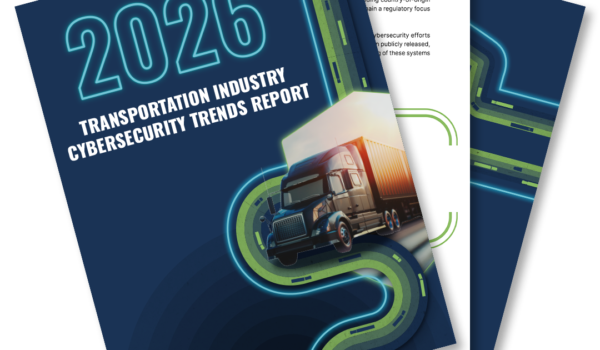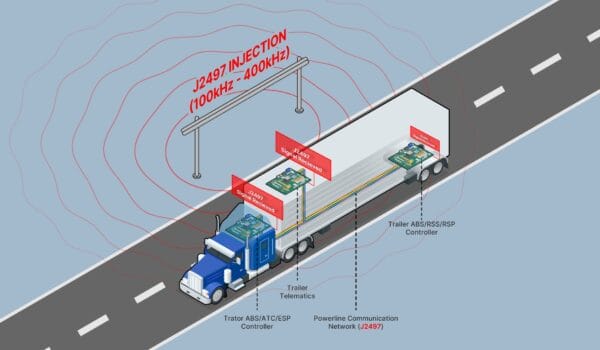Packaging may often be treated as an afterthought in shipping operations—but in the less-than-truckload (LTL) industry, it can be the difference between profitability and preventable losses.
As less-than-truckload (LTL) freight classification rules evolve and dimensioning technology becomes more widespread, shippers must adapt how they package their products to stay compliant, competitive, and efficient. Packaging directly affects how your freight is classified, how much you pay, how it’s stowed and handled, and whether your claims get approved or denied.
This is especially critical now: major updates to the National Motor Freight Classification (NMFC®) have recently taken effect on July 19, 2025. Thousands of items have been reclassified based on updated density and packaging data—and your packaging needs to change with them. These updates are a wake-up call for shippers to revisit outdated assumptions and rethink.
In this post, we’ll explain how packaging affects freight class, cost, claims, and carrier relationships, and how treating packaging as a strategic investment can drive real business value.
The NMFC Is Changing—Your Packaging Should Too
Packaging plays an integral role in the transportability of commodities. But how does one quantify this concept? The NMFC uses four transportation characteristics, which together measure transportability: density, handling, stowability, and liability. Packaging’s primary functions include protection, containment, communication, and convenience; however, it also influences each of these four transportation characteristics. Here are some examples that showcase just how much packaging influences transportability, and in turn, classification:
Density—For articles that are considered fragile, some shipments may include “do not stack” cones on top of the handling unit. It’s an excellent method to ensure that your freight is properly protected, handled, and stowed; however, those cones will directly impact the calculated density of the shipment, as one measures the extreme dimensions of the handling unit to obtain an accurate cube. Therefore, when measuring the handling unit’s height, the cone will be included in the calculation. With the increased use of density-based provisions in the NMFC, it is important to remember the denser the freight is, the lower class you’ll receive; those few extra inches of the do not stack cone can therefore have the potential to change the class of the shipment.
Handling—Carriers heavily rely on mechanical equipment, such as forklifts, to facilitate dock operations. It increases efficiency of loading and unloading trailers, as well as cross dock operations. Palletizing freight is an excellent way to facilitate mechanical handling of freight; however, it’s important to remember to secure the commodities to pallet. Examples include strapping or plastic film wrapped around both the products and pallet. Unitization is an excellent way to make freight more “favorable” for carriers.
Stowability—The LTL environment contains diverse types of freight, and a shipper rarely knows what cargo will be on the same trailer as their products. That’s why it’s important to consider how well your freight will “play” with other freight. Just because you may be shipping general boxed freight with a standard footprint, it doesn’t mean other shippers are doing the same; it’s always good practice to keep in mind the range of commodities handled in an LTL environment, such as hazmat and large machinery so that you can prepare your cargo for any potential interactions. There are other stowability considerations as well, such as where in the trailer freight must be placed (e.g., freight requiring floor loading) and whether there is a flat load bearing surface for top freight or lateral support for adjacent freight.
Liability—Poor packaging predisposes freight to a higher likelihood of damage. Not only will the freight itself be at risk, but it could also damage the surrounding cargo. Additionally, commodities like hazardous materials, frozen foods, and glass have innate liabilities; it’s imperative for shippers to know their products, and in turn, classification, to properly package their freight to mitigate these risks.
The NMFC is constantly updated to keep up with changes in not only logistics but also freight itself. Over time, products evolve (e.g., TVs), and, as such, so should the packaging. As part of the ongoing Classification Reimagined initiative, the NMFC is evolving to reflect how freight is actually packaged and moved today. It is important to be diligent and routinely check for changes in the NMFC to ensure your packaging remains up-to-date and can be safely transported in the LTL environment. And altering products’ packaging can provide opportunities for shippers as well – it can increase profitability, reduce operational disruptions, and support better carrier relationships, and even improve your reputation with consumers. Changing just a fraction of a primary package can have huge implications in creating a denser pallet load. Streamlining packaging and creating a more robust handling unit can increase efficiencies when moving freight. Finally, if your packaging is durable and complies with the NMFC requirements, your carriers will thank you.
The Cost of Poor Packaging
Poor and/or non-compliant packaging can have huge implications for both shippers and carriers. It can lead to misclassifications and billing disputes, freight damage and claims, and reputational damage with carriers.
There are many provisions in the NMFC that are based on “packaging and density.” It means that depending upon the type of packaging you utilize, you’ll be subject to different classes. For example, we may have two sets of classes for a commodity; they are, “in boxes or crates,” or “in packages other than boxes or crates.” More often than not, the latter will have a higher set of classes than when articles are tendered in boxes or crates. Let’s say you tender your product in a “wooden crate” so that it’s classified as a compliant crate. The commodity has its liable surfaces covered and protected, and it’s properly braced within the crate. However, the corners are not “three-way locking corners.” This would not be considered a compliant crate and could therefore be subject to reclassification and potentially billing disputes.
Poor and non-compliant freight also has an increased propensity to damage. Let’s use an example of a box tendered on a lift truck skid or pallet. That box does not have adequate securement (i.e. there is no banding in an opposing direction), and as a result, it shifts and overhangs the pallet. Overhang not only makes cartons vulnerable to damage, but it also decreases their strength by as much as one third. There are no pictorial markings on this box indicating that it cannot be stacked upon, nor does it have a “do not stack” cone. The carrier uses the flat load bearing surface for top freight, and you end up with your product being damaged. If your packaging is non-compliant, the carrier has the right to deny all or part of the damage claim. So in the long run, that method of tender will cost the shipper not only the initial commodity and packaging supplies, but the shipper will also incur expenses for resending the commodity and its packaging.
It’s important for shippers to use the packaging they believe will best protect their products. However, you want to make sure your freight is well packaged and complies with the NMFC’s minimum packaging requirements to mitigate disputes and claims so that the carrier-shipper relationship can be beneficial to both parties. This is a great opportunity to check out NMFTA’s free Essential Guide to Minimum LTL Packaging Requirements to see if your freight is compliant.
Packaging for the Digital Freight Era
The advent of dimensioners has changed the LTL freight game. It not only allows for operational efficiencies, but also provides documentation, including a handling unit’s dimension and method of packaging.
Most dimensioners are equipped with cameras to record this information. With photographic evidence, the consequences of inaccurately reported dimensions and bad packaging are harder to hide. Consistently declaring accurate dimensions and using good packaging will strengthen relationships and decrease the time and costs for reclassifications. Remember that when declaring dimensions, it’s imperative to use the “extreme dimensions,” such as including “do not stack” cones for your height measurements.
Better Packaging = Better Operations
It’s important to look at packaging as a form of long-term investment and not a one-time expense. Some shippers may think that using as little packaging as possible will help save them money. However, as we explored earlier, skimping on packaging can, in fact, lead to higher expenses than the cost of a little extra packaging to begin with. Along these lines, good packaging will streamline operational efficiencies in several ways.
Carriers are ultimately selling space on their trailers; to increase efficiency on their end, the goal is to “cube and weight out” the trailers. If your freight allows it, using standard box sizes and palletizing your shipment could greatly help carriers maximize the cubage of the trailer. Standard footprints are helpful, but if your freight is too long or too heavy for a box, using packaging materials to create a flat load-bearing surface for top freight and support for adjacent freight also goes a long way.
Good palletization practices are also important. Using appropriately sized pallets for your freight ensures not only that there is no overhang, but it also complies with the NMFC requirements (two or more pallets should not be used in lieu of a single, appropriately sized pallet—see NMFTA’s packaging guide). Also, pallets don’t help much if you don’t properly secure your freight. If freight is not well secured to the pallet, then there is a high likelihood that the palletized contents will shift in transit or during handling practices. This potentially leads to damage or loss of the article(s).
Proper barcoding, labeling, and marking freight helps ensure that it does not get lost in transit, nor is it handled or stowed improperly, which could lead to damage. Communication is key in LTL, and on the dock or in the vehicle, shippers cannot communicate any special requirements for their products; in those locations, all communication is tied to bills of lading and packaging. Ensuring that destinations are clearly notated and any pictorial markings or handling/stowing instructions are clearly shown, will better communicate the freight’s needs to the carrier and, in turn, reduce the chance for loss or damage.
Cross-Functional Collaboration Matters
Moving freight is truly a team effort. There are many moving parts or rigors in the LTL environment that shippers may not be aware of; a few examples include vibration, drop forces, altitude, odors, and temperature and humidity changes. With all these factors at play, involving packaging engineers or labs, transportation teams, and procurement can all work to align goals with carriers. Now is the time to have open communication. With the NMFC evolving and ever changing, engaging with carriers for packaging feedback is more vital than ever. Through teamwork and communication, all parties can increase profitability and strengthen relationships.
Now That the NMFC Changes Are Live, It’s Time to Reevaluate Your Packaging
The NMFC changes that took effect on July 19, 2025, are already reshaping how freight is classified—and packaging plays a bigger role than ever. If you haven’t reassessed your packaging strategy, now is the time.
Shippers that treat packaging as a strategic lever—not just a protective shell—will benefit from fewer claims, smoother operations, and more accurate classification in this new landscape.
Need help aligning your packaging with the new standards?
Download NMFTA’s free Essential Guide to Minimum LTL Packaging Requirements for practical tips, diagrams, and compliance checklist.
Supplementary Articles:
FCDC Registered Package Testing Labs
How to Palletize a Shipment: Packaging and Loading Tips
Importance of Packaging and Organization in Transport
LTL Freight Packaging Guidelines
Parcel vs LTL Shipping: What’s the Difference?






